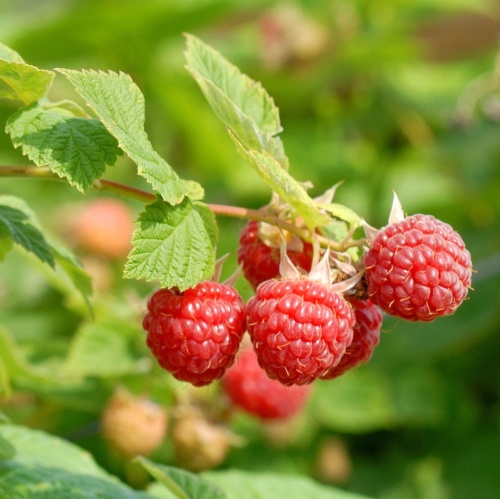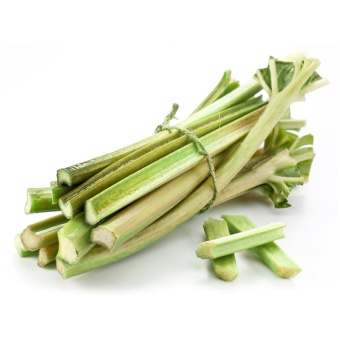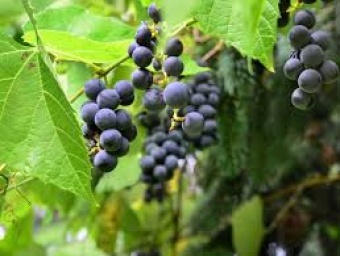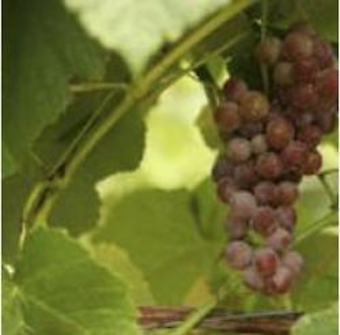Raspberry (Nova)
Item # Nova Raspberry
This item is not available online. Please call for purchasing options.
Summer Red Raspberries: If you had room for only one type of fruit, choose Red Raspberries
One of the easiest fruits to grow.
Raspberry & Blackberries
Both members of the genus Rubus, are collectively known as brambles. All brambles have a perennial root system which produces canes that are either biennial (grow for 2 years) or annual. During the first growing year, the canes are vegetative and are known as primocanes. In the second growing season, the canes become reproductive and bear fruit. Following fruiting, these 2-year-old canes, now called floricanes, die. At the same time, the bramble plant is also producing new primocanes. Under good care, the plant will normally grow and bear fruit for ten years.
The planting site should receive full sun and have good air drainage. Brambles should not be grown in an area in which tomatoes, potatoes, eggplant, peppers or other crops susceptible to Verticillium wilt have been grown in the past 3-4 years. To avoid getting diseases from wild brambles, all wild brambles within 600 feet of your planting should be removed. Heavy or poorly drained soil should be avoided as bramble roots cannot tolerate a water saturated soil condition. Even areas that pond after it rains should be avoided. You should prepare your bramble site at least one year prior to planting. Work to build up organic matter and eliminate perennial weeds. A pH of 5.5 to 6.5 is desirable and the pH should not be below 5.5 or above 7 as serious problems will arise. Contact a fertilizer supplier or your County Extension Office for testing procedures and to determine the best way to amend your soil.
How to plant your brambles
Brambles should be planted on deep, well-drained loamy soils. They can be grown on sandy soils if irrigated. Ninety percent of the bramble root system is in the top 20 inches of the soil-so proper fertilizer and an ample supply of water is important. Set your plants in trenches large enough to contain the roots without crowding. Separate the roots in half and spread out on both sides of the cane. Set all brambles one inch deeper than they were in the nursery. You can determine the proper depth by the dark brown color line on the cane.
Summer Red - Plant 1' to 2' apart. Cut cane off at ground level at the time of planting. Entire planting is cut back at ground level each fall or winter after plants are completely dormant and before any growth starts in the spring. Allow plants to sucker and keep rows about 18" wide. The roots should only be covered with approximately 2" of soil. Be sure to press dirt firmly about the roots and water well to prevent air pockets. If the weather is dry, put on a light straw mulch. Blackberry roots are particularly sensitive to sunlight so it is very important to keep the root covered as much as possible while plants are out of the ground and if possible, plant on an overcast day. If there are any wild brambles growing around or near your new planting, they should be dug up and destroyed to prevent the possibility of their carrying diseases.
Apply 3-5 days after planting, use 1 cup per 10 feet of row, spread evenly with a 12" circle around the plant but no closer than 6" from the cane.
2nd Year apply 1/2 cup per 10 feet of row in the spring when new growth starts and again after harvest.
3rd Year apply 3/4 cup per 10 feet of row in the spring when new growth starts and again after harvest.
Ample amounts of water are needed for a healthy bramble planting, but never standing water. Newly planted plants should be watered well. Producing fields need up to two inches of water per week. This is especially true during fruit development and up to harvest. The use of mulch can help maintain and moderate fluctuations in available moisture but may increase your chances of developing root disease. Therefore we do not recommend using mulch after the first year.
In early spring, thin all floricanes (the 2-year-old canes) to 3-5 large canes per linear feet of row and top at a convenient height for picking. Immediately after fruiting, cut floricanes at round level and burn. If this is done on an annual basis nothing needs to be done to primocanes. 
Where good sanitation is used (old fruited and infected canes are removed from the field), Anthracnose may not be a problem, especially on red raspberries. Where cane diseases are a problem, primarily black and purple raspberries, Lime Sulfur is very important. Lime sulfur is recommended for use on brambles as a delayed-dormant application in early spring (when buds show 1/4-inch green), it can label. If applied later in the season (after 1/4-inch green), it can cause severe damage to leaves and young canes. Lime sulfur is recommended for control of the cane-infecting fungi (anthracnose, cane blight, and spur blight). The delayed dormant application in spring is intended to eliminate or reduce the overwintering inoculums for these diseases on canes. Lime sulfur has a bad smell (rotten eggs) so there can be a problem spraying it around your neighbors. In addition, lime sulfur is very caustic. It is harmful to machine parts, paint (especially on cars) and sprayers. Special care should be taken to avoid drift and proper protective clothing should be worn by the applicator.
Advantages of raised beds
Medium to heavy soils often lack the proper drainage needed to successfully grow brambles. as Phytophthora Root Rot, a soil borne fungus is commonly associated with poorly drained locations. raised beds can be a positive cultural step for control of the disease. Results of experiments show an 87% increase in yields on raised bramble beds. Raised bed production has long been considered an important cultural method for improving soil drainage. Even efforts for an 8-10" bed will be worth the investment. Research has shown, raised beds are an important step for increasing yields in Phytophthora susceptible bramble varieties.


